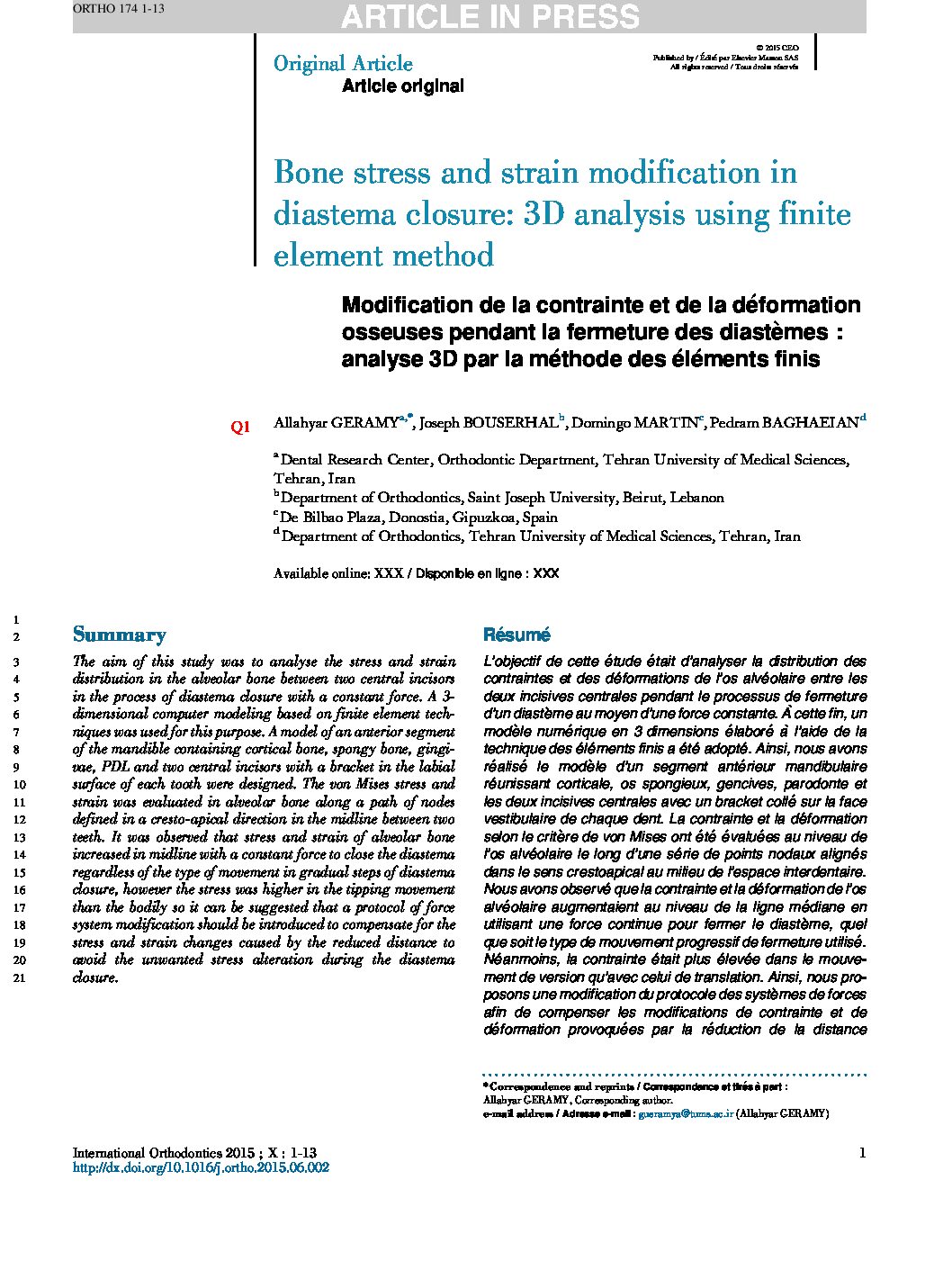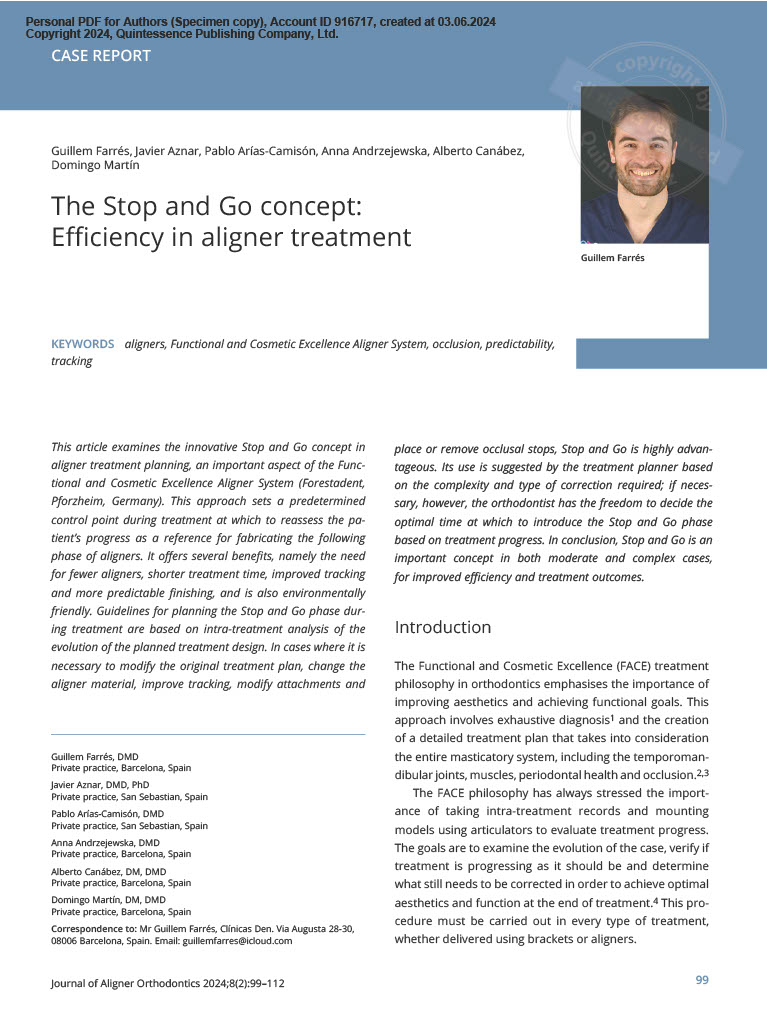Paper language: English
Paper language: Spanish
Paper language: English and spanish

Bone stress and strain modification in diastema closure: 3D analysis using finite element method
AUTHOR: Allahyar Geramy, Joseph Bouserhal, Domingo Martin, Pedram Baghaeian
English abstract
The aim of this study was to analyse the stress and strain distribution in the alveolar bone between two central incisors in the process of diastema closure with a constant force. A dimensional computer modeling based on finite element tech- niques was used for this purpose. A model of an anterior segment of the mandible containing cortical bone, spongy bone, gingi- vae, PDL and two central incisors with a bracket in the labial surface of each tooth were designed. The von Mises stress and strain was evaluated in alveolar bone along a path of nodes defined in a cresto-apical direction in the midline between two teeth. It was observed that stress and strain of alveolar bone increased in midline with a constant force to close the diastema regardless of the type of movement in gradual steps of diastema closure, however the stress was higher in the tipping movement than the bodily so it can be suggested that a protocol of force system modification should be introduced to compensate for the stress and strain changes caused by the reduced distance to avoid the unwanted stress alteration during the diastema closure. Keywords Orthodontic tooth movement. Tipping movement. Bodily movement. Bone stress. Bone strain. Finite element method.Spanish abstract
L’objectif de cette etude etait d’analyser la distribution des contraintes et des deformations de l’os alv eolaire entre les deux incisives centrales pendant le processus de fermeture d’un diasteme au moyen d’une force constante. A ` cette fin, un modele num erique en 3 dimensions elabor e a ` l’aide de la technique des el ements finis a et e adopt e. Ainsi, nous avons realis e le mod ele d’un segment ant erieur mandibulaire reunissant corticale, os spongieux, gencives, parodonte et les deux incisives centrales avec un bracket colle sur la face vestibulaire de chaque dent. La contrainte et la deformation selon le critere de von Mises ont et e evalu ees au niveau de l’os alveolaire le long d’une s erie de points nodaux align es dans le sens crestoapical au milieu de l’espace interdentaire. Nous avons observe que la contrainte et la d eformation de l’os alveolaire augmentaient au niveau de la ligne m ediane en utilisant une force continue pour fermer le diasteme, quel que soit le type de mouvement progressif de fermeture utilise. Neanmoins, la contrainte etait plus elev ee dans le mouve-ment de version qu’avec celui de translation. Ainsi, nous pro- posons une modification du protocole des systemes de forcesafin de compenser les modifications de contrainte et de deformation provoquees par la r eduction de la distance interdentaire et afin d’eviter les changements de contrainte indesirables pendant la fermeture du diast eme. Mots cles ·Mouvement dentaire orthodontique. ·Mouvement de version. ·Mouvement translationnel. ·Contrainte osseuse. ·Deformation osseuse. ·Methode des el ements finis.Download paper (PDF)
Access our most valuable content free of charge.
Related Scientific papers
1st FACE online symposium
The world is changing and in FACE, following tradition, we wont be left behind.
As we all know, we can’t travel or meet, so once again, we will take advantage of technology to turn the situation around.
«Work hard, play hard«
Two days full of experiences, thanks to the participation of 20 different clinics.
We’ll see you on February 26 and 27





